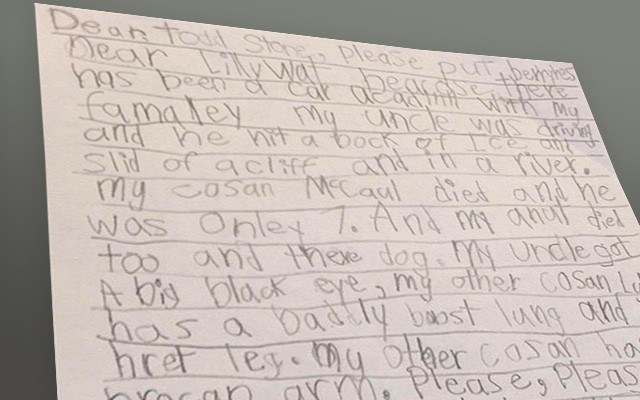Had there been a roadside barrier at the site of his Jan. 2 crash on Highway 99 near Lillooet, Rob Sage believes his wife and son would still be alive.
"It's a tragic thing that happened," Sage said this week. "There's no doubt in my mind that had there been a barrier on that corner I would have been home Friday night after a minor fender bender."
On that snowy day early last month, Sage and his family were driving north from Lillooet when Sage lost control going into a corner. With a car approaching in the other lane, Sage was left with a split second decision — left or right?
"If I chose left we'd be in the ditch and all of us would be alive and I'd have a wrecked up car, no problem," he said. "I decided to go right."
Sage's car avoided the head-on collision, but a sideswipe with the oncoming vehicle forced his car closer to the edge of the highway.
"I braked and turned as hard as I could, and tried to keep going and that corner was coming at me, and we were almost stopped," he said. "We slid and slid and slid and almost stopped. And then the back, right wheel went over the edge."
It's the kind of driver error that happens hundreds of times over on highways across the province. In this case the mistake took the life of Sage's wife Trish Donohue and son McCaul Sage.
In the days following the accident, Sage's seven-year-old niece Riley Donohue wrote a handwritten letter to provincial transportation minister Todd Stone, asking that he "please, please, please put berryrs" along the highway where her aunt and cousin lost their lives.
Last week, Stone responded with a handwritten letter of his own, ensuring that the ministry would undertake a safety review for the stretch of highway in question.
"I was very moved by the letter from Riley, and I wrote in response that we will investigate whether there is more that can be done on that stretch of road," Stone said in an emailed statement to Pique.
"This was a tragic incident that affected many residents in the region, and I have been deeply touched by the concerns they have shared with me," he said. "An investigation is also underway by the RCMP, and the ministry will also seriously consider any recommendations that might arise from it."
A spokesperson for the Ministry of Transportation confirmed to Pique that a "guardrail warrant assessment" would take place this spring at the location of the Jan. 2 crash, approximately four kilometres north of Lillooet.
But according to Lillooet resident Deanne Zeidler, whose petition calling for a reassessment of highway safety in the area garnered more than 2,200 signatures, the ministry isn't going far enough.
"There are road engineers who I think should be looking at the dangerous areas where dropoffs are substantial, and looking at a preventative and proactive approach to reducing those hazards. It seems so reactive to be waiting for a fatality and then issuing a warrant," Zeidler said.
A road safety report released in 2013 by the Interior Health Authority shows that while the Lillooet local health authority accounted for the lowest percentage of crashes from 2003 to 2007 at 0.1 per cent, it also has "the highest proportion of fatal crashes," with more than 19 per cent of crashes in the area resulting in death.
Of 31 crashes in the Lillooet area from 2003 to 2007, six resulted in fatalities.
A thorough review of the area was done in 2011, and in 2012 a warning sign review resulted in upgraded signage.
The RCMP, coroner and traffic analysts who attended the Jan. 2 accident will provide the ministry with their assessment of the causes of the crash.
"The incident is still under investigation. Ministry staff will consider any recommendations which result from the RCMP's investigations into this crash," the ministry said.




